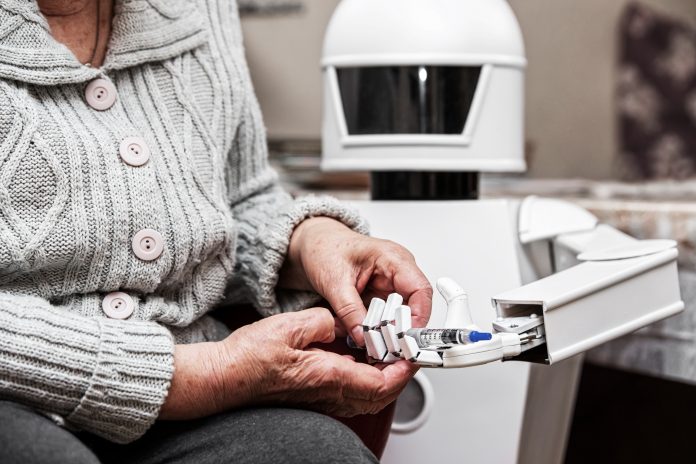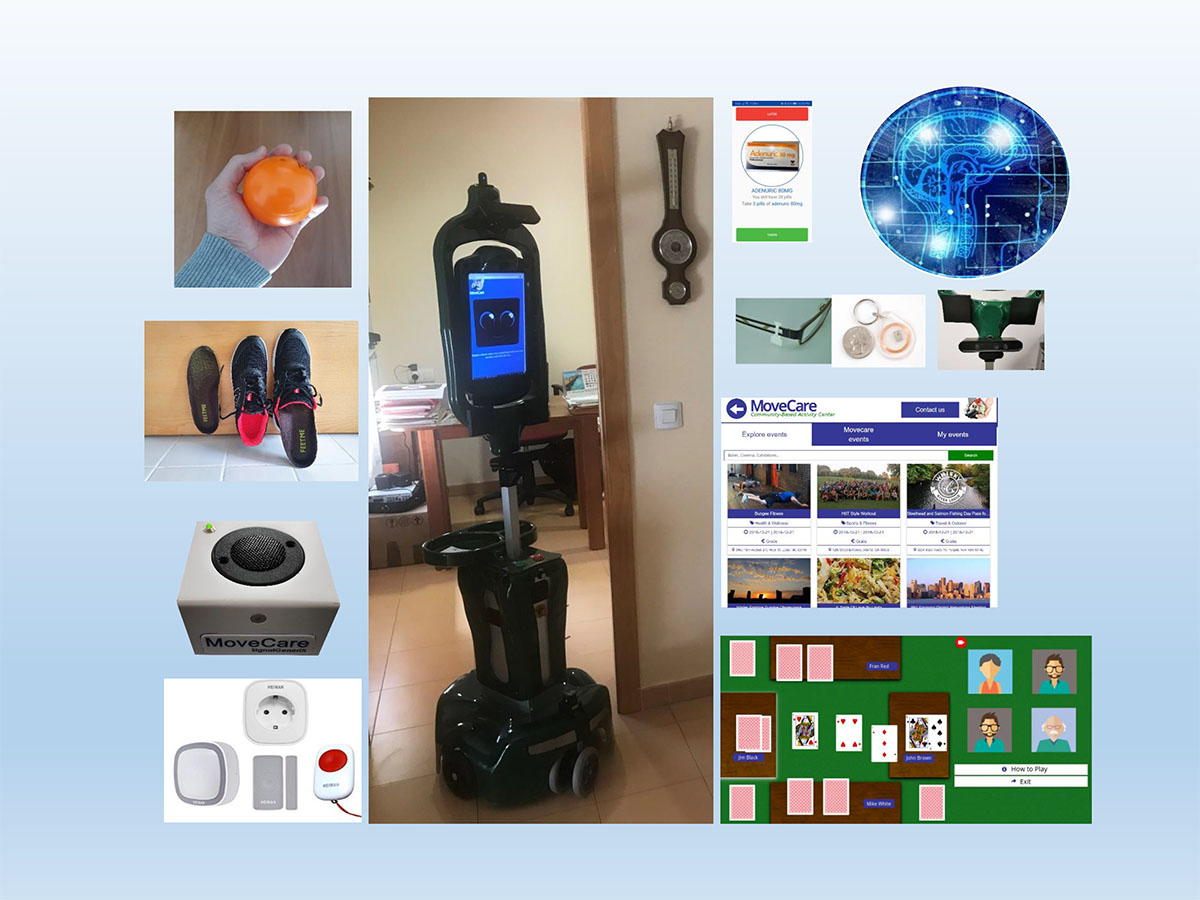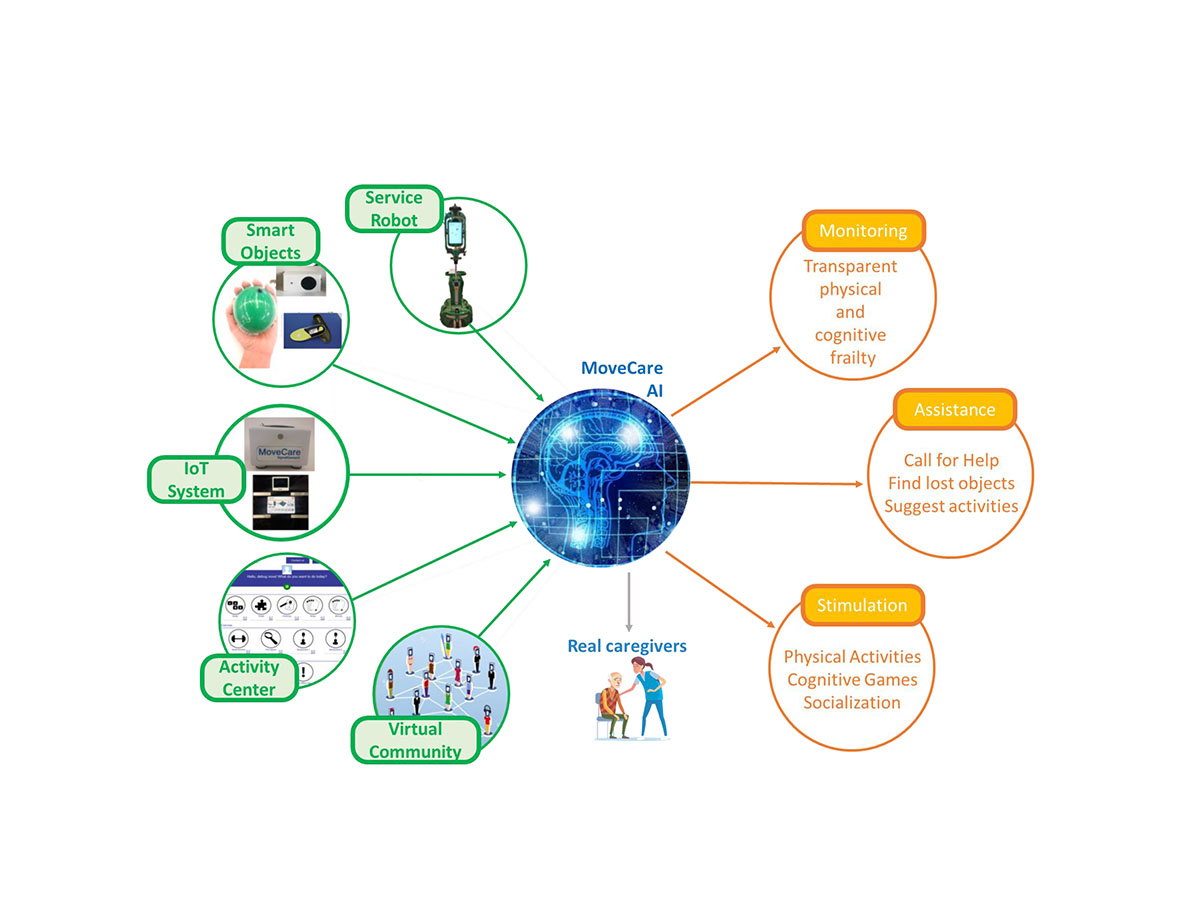Nunzio Albero Borghese discusses the potential of MOVECARE, a Horizon 2020 sponsored project, to be a robotic caregiver for independently living elders
“Senectus ipsa est morbus” (old age is itself a disease) said Terenzius, a Latin writer who lived in the II century B.C. Indeed, nowadays, people live longer, at least in more advanced countries, but do they live better? The need for safety, monitoring and socialisation has steadily increased in the last years.
MOVECARE, a research and innovation project financed by the European Horizon 2020 program, integrates an autonomous service robot with heterogeneous technology and with Artificial Intelligence to provide those functionalities that would allow elders to live in their home better. And for a prolonged time.
How does the robot work?
The robot, named Giraff, acts here as a robotic caregiver. It is ready to intervene in case of help: a set of smart microphones, placed in the different rooms, is trained to pick-up a help request from the elder; they transmit it to Giraff that autonomously searches for the elder through vision with the support of domotic sensors that provide an estimate on the user current location. When the robot reaches the user, it tries to understand if help is really required and, in case, it starts a video-call with the real caregiver, who can remotely control the robot to interact with his/her cared and to better analyse the situation. Ultimately, the caregiver is able to make the decision if to call for an emergency.
Giraff is also able to look for lost objects in the house by using its radio-frequency (RF) stereo antennas. RF tags are placed onto commonly used objects such as key holders, remotes, or inside the wallet. When a tag is hit by the RF waves emitted by the robot, these are reflected back towards the two antennas. From the difference in receiving power between the two antennas, the robot derives the direction navigates towards the location of the object. When in close range it is helped also by its vision system to locate the object.
Moreover, the Giraff robot fosters socialisation among peers by providing access to a Community Based Activity Center (CBAC) that could be accessed through a touch screen among other devices. The CBAC is a platform that offers to the user the possibility to do virtual activities with peers, connected through a Virtual Community, and at the same time see each other through audio-video communication. So, for instance, four elders can play a card game, each being in his/her own house and at the same time seeing and talking to each other. The same communication principle is used to provide virtual group sessions of gentle exercising to stay fit.
But the CBAC is not only this, it is connected with event brokerage engines, like Eventbrite, to propose elders’ events that take place in their urban area. If elders choose to attend an event, this is shown to the other members of the community who are going to attend the same event and who can join it, thus constituting, therefore, a true social engine.
The second pillar of the MOVECARE system is monitoring possible decline. To this aim, specific smart objects have been developed. Insoles measure the plantar pressure and allow the computation of indexes related to stability and quality of gait and posture. They can be used in combination with exer-games that stress postural control to early identify signs of degradation. MOVECARE has also developed an anti-stress ball that allows measuring the maximum grip force overtime as its decrease is recognised as one of the five signs of frailty phenotype. Such information is integrated with information collected by typical Ambient Assisted Living (AAL) domotic framework: time of TV switched on, duration of sleep and quality of sleep, time of presence in the different rooms to get a picture of typical habits of the elders inside his/her home.
The Giraff is an actor within such monitoring framework by providing to the user, once in a while, spot questions that investigate the ability of the user to orient in space and time, his/her procedural and spatial memory capability and other cognitive domains. The ensemble of questions, and their relative answers, gives insights on the actual cognitive state of the elder without needing (although not replacing) a thorough clinical screening that is time consuming for both the elder and for the clinician himself. The proposed technology enables a form of cognitive assessment distributed in time.
Giraff Artificial Intelligence
The Giraff Artificial Intelligence orchestrates the system. It provides suggestions of activities according to the elders’ preferences and clinical needs set and general information on the day and collects requests. More important it browses through the data acquired by smart objects, domotic system, and CBAC to portray a picture of the physical and cognitive state of the elder to early detect possible decline. A lumped report of the activities and status of the user is reported to the real caregiver periodically.
During a field experiment, the platform has been deployed inside the house of thirty elders living independently in the area of Milan, Italy and in the area of Merida, Spain, who were free to use the system. This has allowed to better tune the interface and the modality of operation. At the end of the pilot, the functionalities developed have reached the maturity of a prototype that is now ready to be exploited by industry.
Please note: This is a commercial profile













